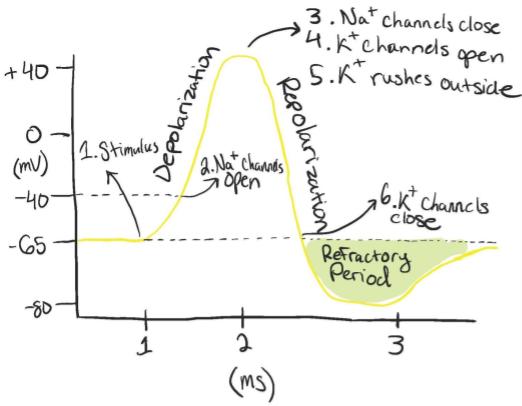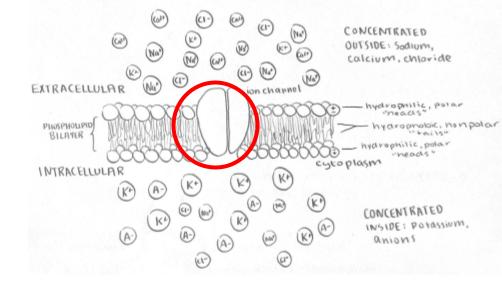Membrane Changes During Signal Transmission
The neuron membrane undergoes several changes to relay information from one part of the neuron to the axon terminal. These changes primarily involve electrical signaling, known as the action potential. Key properties of the membrane that change include:
1. Membrane Potential
The membrane potential refers to the difference in electrical charge across the neuronal membrane.
At rest, the inside of the neuron is negatively charged compared to the outside, creating a resting membrane potential of about -70 mV. This potential is maintained by the activity of the sodium-potassium pump and ion channels.
This is due to the uneven distribution of ions, with more potassium (K+) inside and more sodium (Na+) outside the cell. The membrane is more permeable to K+, allowing it to leave the cell, creating a negative charge inside.
2. Ion Permeability
The membrane's permeability to ions, particularly sodium (Na+) and potassium (K+), changes rapidly during signaling. Voltage-gated ion channels open in response to changes in membrane potential. Sodium ions rush into the neuron, causing depolarization, while potassium ions exit to restore the resting potential in a process known as repolarization.
Action Potential Chart

The action potential is a rapid change in the membrane potential that occurs when a neuron sends a signal. The stages of an action potential include:
- Resting State: The neuron is at its resting membrane potential (-70 mV), and voltage-gated sodium and potassium channels are closed.
- Depolarization: When a stimulus reaches the neuron, voltage-gated sodium channels open, allowing sodium ions to flow into the cell. This influx of positive charge causes the membrane potential to become more positive.
- Repolarization: Once the membrane potential reaches its peak (+30 mV), sodium channels close, and voltage-gated potassium channels open. Potassium ions exit the neuron, returning the membrane potential to its resting state.
- Hyperpolarization: Potassium channels stay open a bit longer than necessary, causing the membrane potential to temporarily dip below the resting potential (more negative).
- Return to Resting State: The sodium-potassium pump restores the resting potential by actively transporting sodium out of the neuron and potassium into the neuron.
